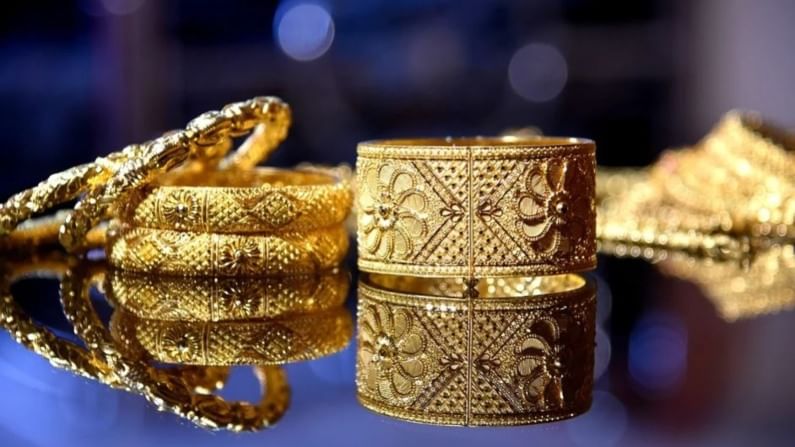Why are gold loans mutually beneficial for both banks and borrowers?
Experts advise borrowers to take gold loan if it is for funding short-term working capital needs and to cover up for a stretched payment cycle
- Sakshi Batra
- Last Updated : July 5, 2021, 13:37 IST

Indian banks and financial institutions have struck gold, quite literally, as the Covid-19 pandemic led to a sharp surge in the demand for gold loans. Over the 12-month period ended May 2021, the gold loan segment for scheduled commercial banks recorded the highest credit growth among all sectors at 33.8%. The gold loan outstanding with banks has risen from Rs 46,415 crore in May 2020 to Rs 62,101 crore.
As per the RBI data, the gold loan portfolio of banks swelled 81.6% year-on-year (y-o-y) to Rs 60,464 crore as on March 26, 2021, against Rs 33,303 crore as on March 27, 2020.
Why has demand for gold loans spiked?
Although this indicates deep distress in the economy, as loans against gold jewellery are typically considered to be the last resort used by households and small businesses in times of severe cash crunch, these loans have helped individuals and small businesses tide over stressful times.
“During the pandemic, gold loans have become more important for both individuals and relieved many during the phase economy was in under pressure, leading to job losses, salary cuts, and mounting emergency health expenses”, said Vandana Bharti, AVP, Commodity Research, SMC Global.
Manappuram Finance, a leading gold loan provider at the time of releasing its FY21 results had mentioned, “We had an auction of around 1 tonne this year. Compared to normal situations, this 1-tonne auction across all of our branches is pretty high.”
The RBI too stepped up to mitigate the impact of the pandemic on households by easing some rules and increasing the LTV (Loan To Value) for loans against the pledge of gold ornaments and jewellery for non-agricultural purposes from 75% to 90% till March 31, 2021. With a higher LTV and elevated gold prices, borrowers could get more loan per gram of gold pledged.
Should you go for a gold loan?
The gold loan segment has emerged as a major growth area for banks this year as it is easier to get compared to other loans. Gold loans are short-duration loans. Most lenders give gold loans for one year or two years. Gold loans can be availed from banks, NBFCs, or even jewellers.
Experts say that if the loan is for funding short-term working capital needs and to cover up for a stretched payment cycle, it is advisable to take it. In fact, experts see gold loans as a win-win for both borrowers and lenders. Given that a gold loan is fully secured, has less default risk, and zero capital charge, it is an attractive product for lenders.
“It is beneficial for clients in many ways. A gold loan can be taken on a lower interest rate as compared to the normal interest rate and with a higher LTV (loan to value) and elevated gold price, borrowers could get more loan per gram of gold pledged. On the lender side, a gold loan is fully secured, has less default risk, and zero capital charge. Universal acceptability and high liquidity is making gold loans viable and it is saving the economy in many ways”, said Bharti.
Gold Loan Outlook
Broking houses and research firms are still positive on the growth outlook on gold loans. BofA Securities is of the opinion that the gold loan industry is set to continue its strong growth trajectory. One of the key drivers for the industry is rising penetration levels coupled with cyclical uplift in credit demand as the economy recovers.
It also expects gold loans to resume their steady growth of 12-15% per annum from Q2FY22 estimated as branches re-open post-Covid lockdown.
Download Money9 App for the latest updates on Personal Finance.
Related
- बैंक ऑफ महाराष्ट्र ने रिटेल लोन दरों में 0.25 प्रतिशत की कटौती की
- इंडसइंड बैंक का बड़ा कदम, डेरिवेटिव अकाउंट में मिली गड़बडि़यों की वजह पता करने के लिए पेशेवर कंपनी की नियुक्त
- बैंक जमा पर बीमा की सीमा बढ़ाने से बैंकों के मुनाफे पर होगा असरः इक्रा
- बैंक डूबा तो अब मिलेंगे 8-12 लाख! सरकार बढ़ा सकती है इंश्योरेंस लिमिट
- बंद हो गया बैंक अकाउंट, SIP भी है लिंक तो तुरंत करें ये 5 काम
- J&K बैंक को SEBI की चेतावनी, 1 फीसदी से ज्यादा टूटा शेयर; जानें पूरा मामला

